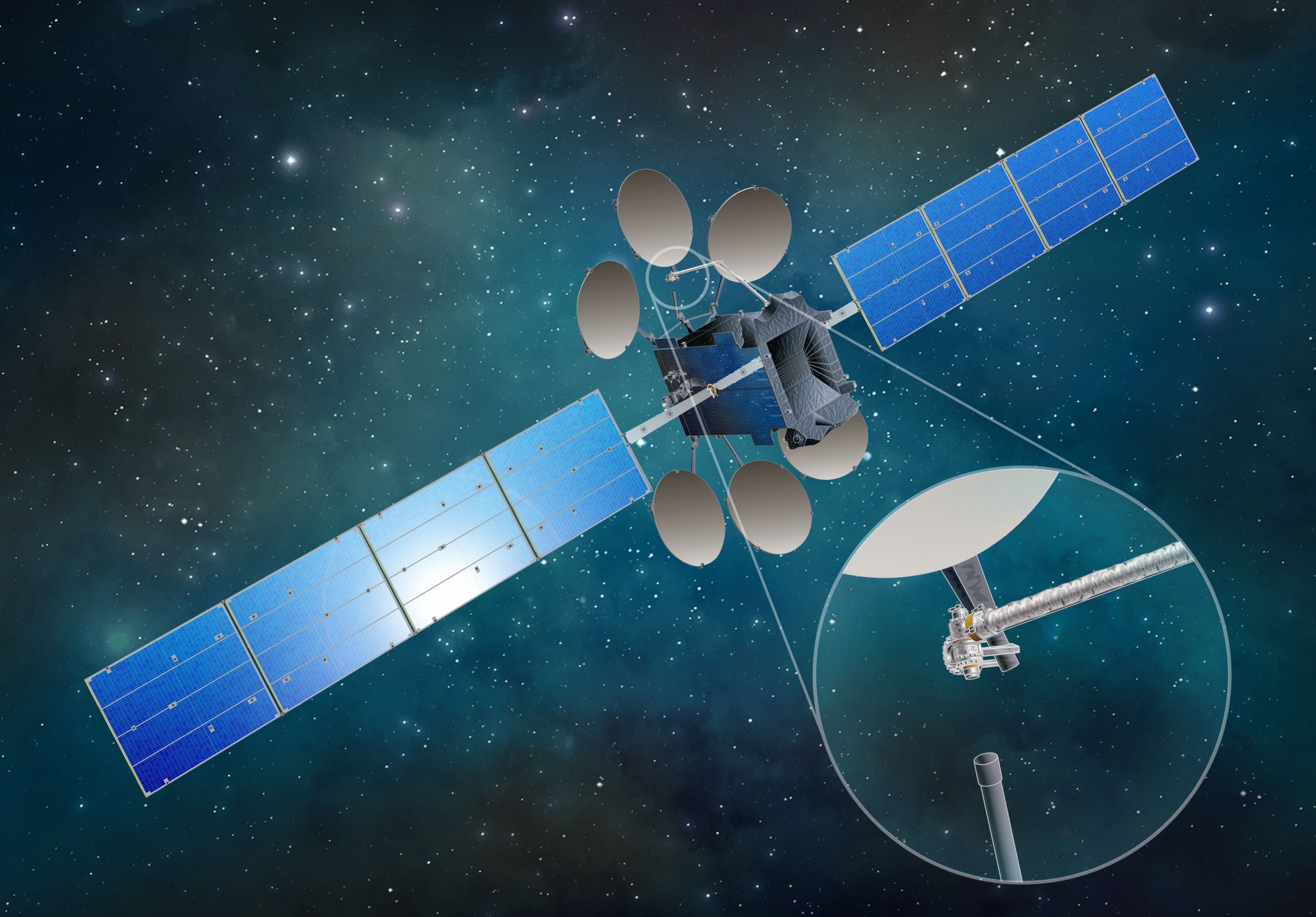A revolutionary NASA Technology Demonstration Mission project called Dragonfly, designed to enable robotic self-assembly of satellites in Earth orbit, has successfully completed its first major ground demonstration.
“Dragonfly has taken a crucial step toward rewriting the book on what we can do in Earth orbit — and what that means for a robust space infrastructure,” said John Lymer, chief architect of robotics and automation for Space Systems Loral (SSL) of Palo Alto, California, which leads the Dragonfly venture for NASA and conducted the testing at its Pasadena facility.
A lightweight robotic system with a dexterous 3.5-meter arm that’s able to clamp down, carry items or operate controls — from either end of the “limb” — Dragonfly can install delicate satellite antenna, yet also assemble satellites too massive to be launched to space in their final flight-ready state.
These disassembled satellites may be stowed more efficiently or even launched in pieces via multiple flights, enabling mission planners to maximize cargo space and reduce mass. That shift would dramatically reduce launch costs and lead to less expensive, higher-performing satellites.
Dragonfly is one of three NASA tipping point projects seeking cutting-edge solutions under the umbrella of the TDM program’s In-space Robotic Manufacturing and Assembly portfolio. These tipping point projects help the agency determine whether technologies have been sufficiently matured to pursue flight demonstrations or for infusion into future exploration missions.
“NASA relies on commercial innovation as exemplified by the Dragonfly team,” said Trudy Kortes, TDM program executive at NASA Headquarters in Washington. “Transformative technologies such as these will, in time, lead to more affordable, safer human access to space and more efficient, longer-lasting satellites, probes and other space hardware. Today our future in space looks brighter and more robust than ever.”
More about Dragonfly capabilities
During the August ground demonstration, Dragonfly’s initial focus was the installation and reconfiguration of large antenna reflectors on a simulated geostationary satellite. The antennas are designed to focus the satellite signal to receivers on the ground. Additional demonstrations are planned through 2018 to further refine its processes and capabilities, including more fluid robotic arm movement and its ability to make even more precise reflector alignments.
Over time, the system will integrate 3-D printing technology enabling the automated manufacture of new antennae and even replacement reflectors as needed. Should a piece of hardware be damaged, or come to the end of its lifecycle, engineers could remotely remove and recycle the outdated component, replacing it with a new one.
“This is a major step forward in overhauling how we manage satellites in orbit,” said Al Tadros, vice president for space infrastructure and civil space at SSL. He envisions a robust space infrastructure servicing industry, including commercial refueling platforms designed to service geostationary satellites and cargo missions to other planets.
Lymer concurred. “Being able to build what we need when we need it, change out hardware and components, even reconfigure old satellites for new tasks when they finish their initial missions, using affordable robotic technology,” he said. “We’re no longer at the mercy of launch costs and launch windows.”
The Dragonfly project leverages a previous SSL study supported by Defense Advanced Research Projects Agency funding. Collaborating on the project are NASA’s Langley Research Center in Hampton, Virginia; NASA’s Ames Research Center in Moffett Field, California; Tethers Unlimited of Bothell, Washington; and SSL’s affiliate MDA US Systems LLC of Pasadena, California. The project is sponsored by NASA’s Space Technology Mission Directorate.
For more information about Dragonfly, visit:
http://www.sslmda.com/html/robotics_servicing.php
To learn more about NASA’s Space Technology Mission Directorate, visit:





























